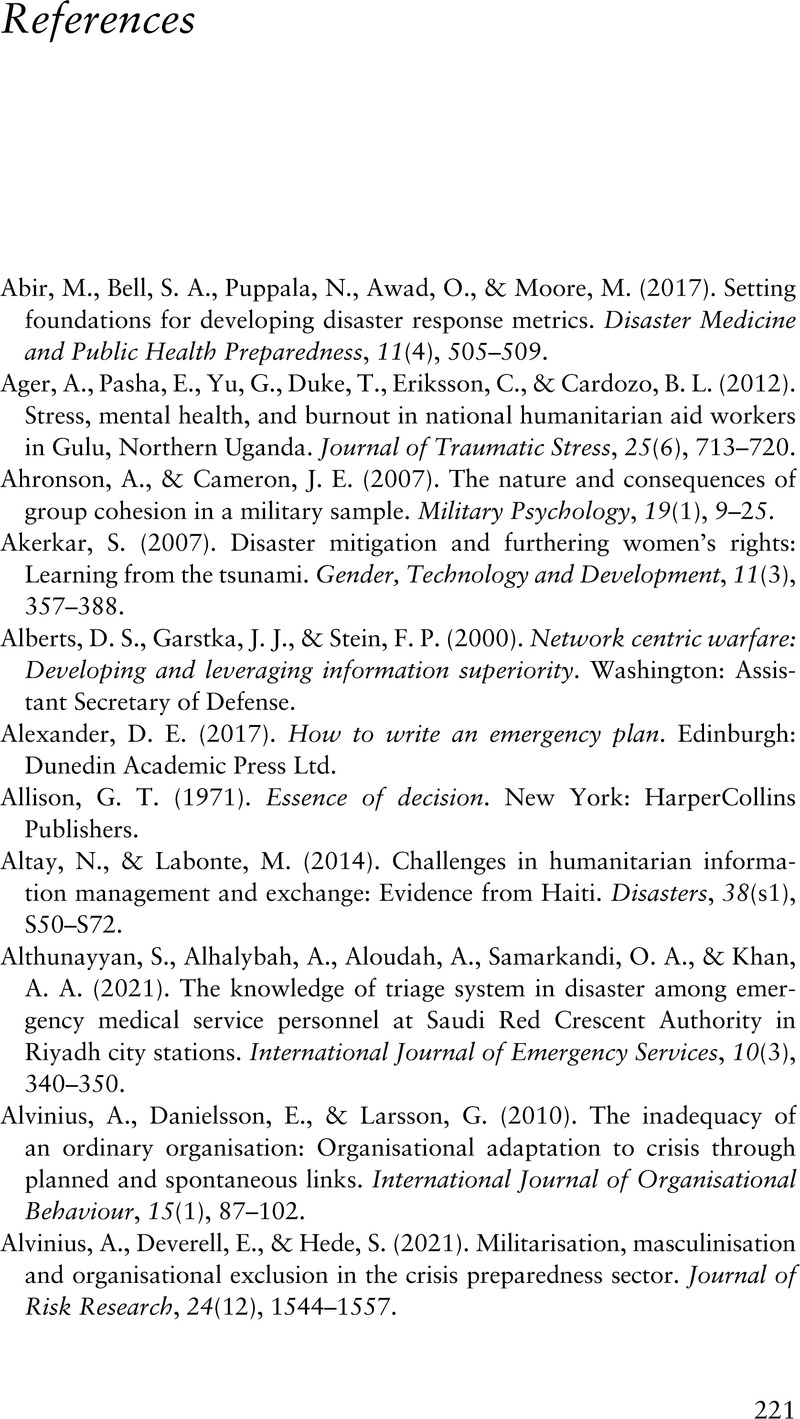 Frontline Crisis Response
Frontline Crisis Response Book contents
- Frontline Crisis Response
- Frontline Crisis Response
- Copyright page
- Dedication
- Contents
- Tables
- Acknowledgments
- 1 Operational Dilemmas in Frontline Crisis Response
- 2 Leadership
- 3 Sensemaking
- 4 Acting
- 5 Ethics
- 6 Emotions
- 7 Ties
- 8 Structures
- 9 Coordination
- 10 Civilians
- 11 Technology
- 12 Goals
- 13 Advancing Research on Frontline Crisis Response
- References
- Index
- References
References
Published online by Cambridge University Press: 28 September 2023
- Frontline Crisis Response
- Frontline Crisis Response
- Copyright page
- Dedication
- Contents
- Tables
- Acknowledgments
- 1 Operational Dilemmas in Frontline Crisis Response
- 2 Leadership
- 3 Sensemaking
- 4 Acting
- 5 Ethics
- 6 Emotions
- 7 Ties
- 8 Structures
- 9 Coordination
- 10 Civilians
- 11 Technology
- 12 Goals
- 13 Advancing Research on Frontline Crisis Response
- References
- Index
- References
Summary

- Type
- Chapter
- Information
- Frontline Crisis ResponseOperational Dilemmas in Emergency Services, Armed Forces, and Humanitarian Organizations, pp. 221 - 256Publisher: Cambridge University PressPrint publication year: 2023


